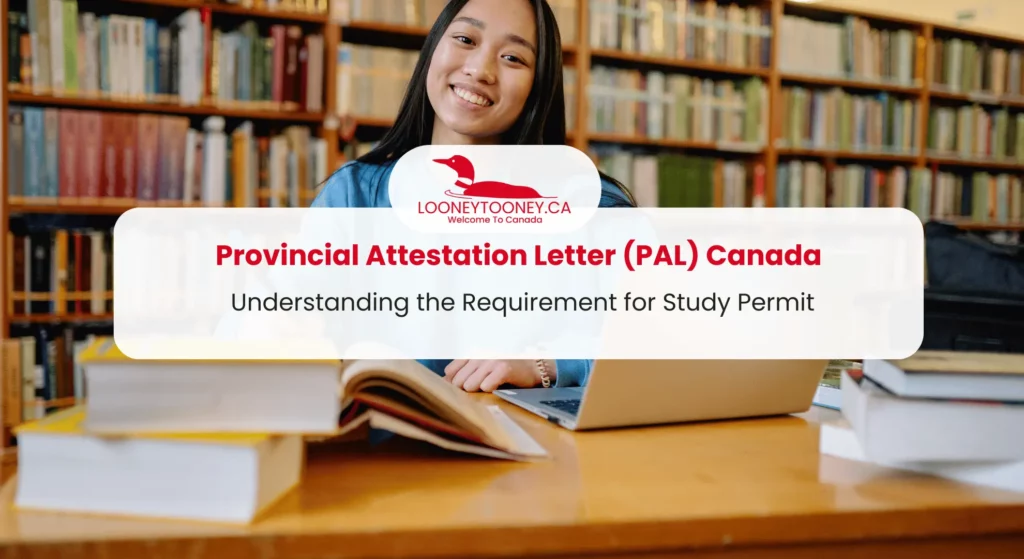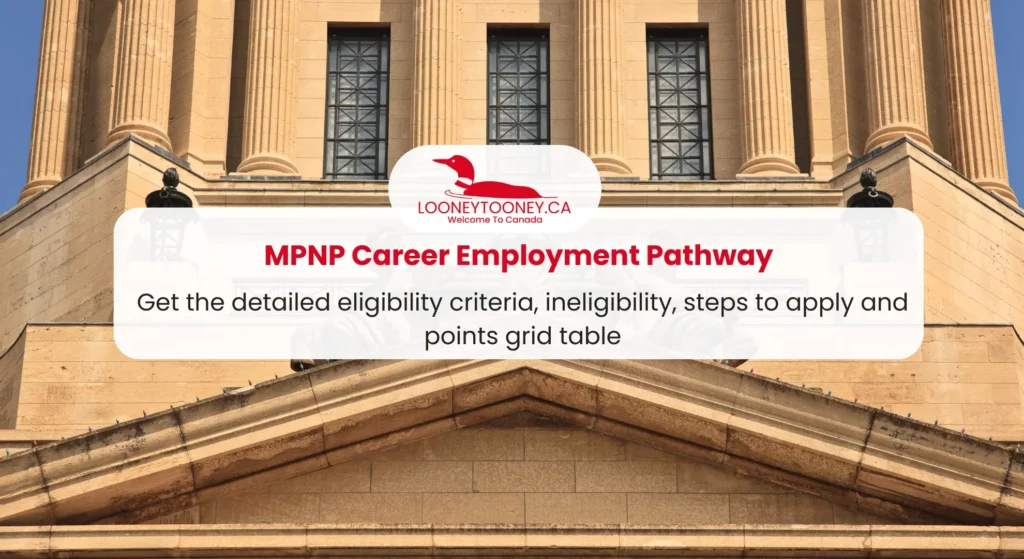A Temporary Resident Permit (TRP) is a document that allows individuals who are either inadmissible or do not meet the requirements of the Immigration and Refugee Protection Act or Regulations, as either temporary or permanent residents, to enter or stay in Canada.
It’s important to note that a work or study permit, or a Temporary Resident visa, is distinct from a Temporary Resident Permit. The former documents are clearly labeled as visas or work and study permits. One is not considered a temporary resident permit holder unless specifically issued a document identified as such, and TRPs are only granted in exceptional circumstances at the discretion of the processing officer, with the possibility of cancellation at any time.
Approval of Temporary Resident Permit applications is determined by Canadian Border Service officers, who weigh the risks of an individual’s entry against the benefits to Canadian society. Therefore, applicants must demonstrate their deservingness of temporary residence in Canada. TRPs typically cover the duration of a person’s stay in Canada, and if granted, the individual must leave once their temporary residence expires.
To qualify for a temporary resident permit, your need to enter or stay in Canada must be deemed more significant than the potential health or safety risks to Canadian society, as determined by an immigration or border services officer. It is essential to demonstrate the justification for your visit, even if the reason for inadmissibility appears minor.
Table of Contents
- Who requires a Temporary Resident Permit (TRP) Canada?
- What is Inadmissibility in Temporary Resident Permit (TRP) Canada?
- Reasons for Inadmissibility in Temporary Resident Permit (TRP) Canada
- Application Process for a Temporary Resident Permit (TRP) Canada
- Application Processing Timeframes
- Documents of Temporary Resident Permit (TRP) Canada
- Overcoming Criminal Convictions
- Temporary Resident Permits Work and Study Permits
- Departing and Returning to Canada
- Temporary Resident Permit (TRP) Canada Frequently Asked Questions
Who requires a Temporary Resident Permit (TRP) Canada?
Anyone inadmissible to Canada but with a legitimate need to enter the country requires a TRP. TRPs can address either medical or criminal inadmissibility. For instance, if someone is inadmissible due to a criminal conviction, and their sentence was completed less than five years ago, a Temporary Resident Permit may be the best option for travel to Canada. In cases of a person being deemed inadmissible, their accompanying family members may also face inadmissibility and need to apply for individual TRPs before entering Canada.
The instances below necessitate foreign nationals to seek Temporary Resident Permits (TRP) for entry into Canada
1. Individuals convicted of a crime outside of Canada that, if committed within Canada, would equate to an indictable offense punishable by a sentence of less than 10 years.
2. Individuals with a foreign conviction equivalent to a hybrid offense, punishable by a sentence of less than 10 years.
3. Individuals convicted of two or more crimes abroad, which, if committed in Canada, would be equivalent to two summary offenses.
When evaluating a foreign criminal record, the key consideration is comprehending the Canadian equivalent offense, considering the nature and severity as outlined in Canada’s Criminal Code. Establishing such equivalence paves the way for addressing criminal inadmissibility.
Note: Offenses occurring within Canada during a temporary stay, visitor visa, or work permit may result in a determination of criminal inadmissibility, impacting the ability to remain a temporary visitor or pursue permanent residence.
What is Inadmissibility in Temporary Resident Permit (TRP) Canada?
Certain individuals are not permitted to enter Canada, falling under the category of “inadmissible” according to Canada’s immigration law.
The determination of your eligibility to enter Canada is made by a Canadian immigration officer either when you apply for a visa or an Electronic Travel Authorization (eTA) or upon your arrival at a port of entry. Various reasons, such as security, criminal, or medical concerns, may lead to a decision not to admit you into Canada.
In the case of being deemed inadmissible to Canada, typically, entry into the country is not allowed. However, if you have a valid and justifiable reason to travel to Canada under the circumstances, a temporary resident permit may be issued.
Penalties of Impaired Driving
Driving under the influence of alcohol or drugs, including cannabis, can result in inadmissibility due to serious criminality. This implies that
1. You may not enter or stay in Canada unless a temporary resident permit is issued.
2. A processing fee of CAN$200 for the permit is applicable, with no guarantee of being permitted to enter or stay in the country.
Reasons for Inadmissibility in Temporary Resident Permit (TRP) Canada
The determination of your eligibility to enter Canada rests with a Canadian immigration officer, whether you are applying for a visa or an Electronic Travel Authorization (eTA) or arriving at a port of entry.
If found inadmissible, you may face visa or eTA denial, refusal of entry to Canada, or removal from the country. Inadmissibility can stem from various reasons, including
1. Security Concerns
– Espionage
– Subversion (attempts to overthrow a government, etc.)
– Violence or terrorism
– Membership in an organization involved in any of the above
2. Human or International Rights Violations
– War crimes
– Crimes against humanity
– Being a senior official in a government engaged in gross human rights violations or subject to international sanctions
3. Criminal Activity
– Committing a crime, including driving under the influence of drugs or alcohol
– Organized crime, including membership in an organization participating in organized criminal activities, people smuggling, or money laundering
4. Medical Reasons
– Conditions that endanger public health, safety, or cause excessive demand on health or social services (some applicants are exempt)
5. Financial Reasons
– Inability or unwillingness to support yourself and your family members
6. Misrepresentation
– Providing false information or withholding information directly related to decisions made under the Immigration and Refugee Protection Act (IRPA)
7. Non-compliance
– Failure to comply with any provision of IRPA
8. Inadmissible Family Member
– Having a family member who is deemed inadmissible
If you possess a legitimate reason to visit Canada but are otherwise considered inadmissible, you may have the option to obtain a temporary resident permit.
It’s important to note that there is no assurance of being issued a temporary resident permit.
Application Process for a Temporary Resident Permit (TRP) Canada
How to Apply for TRP in general cases?
You have the option to submit your TRP applications from your home country through the online portal provided by IRCC. Additionally, you may have the opportunity to apply at a Canadian embassy or consulate.
In some cases, a visit to an interview with an IRCC officer in your home country may be required. During the interview, the IRCC officer will pose questions related to your application. You need to answer these questions and get your Temporary Resident Permit.
If you’re eTA-required
If your eTA application was refused, and you are a citizen of a country requiring eTA, you may be eligible for a temporary resident permit. The issuance depends on the nature and circumstances of inadmissibility and the purpose of your travel to Canada.
If you’re visa-required
For those requiring a visa, you must apply for a visitor visa and provide supporting documents explaining your inadmissibility and justifying your entry into Canada. An interview may be required for the officer to assess your application. You can read our article on visitor visa to know the steps to apply for a Temporary Resident Permit (TRP) Canada.
If you are applying through Canadian Consulates
Despite the extended processing time (3-6 months) associated with applying for Temporary Resident Permits (TRPs) through a Canadian consulate, it is widely regarded as the most advisable method for a foreign national to submit their application to Canadian immigration authorities.
This preference is grounded in the fact that an experienced immigration officer will make a decision, comprehending the various justifications for your visit. It eliminates guesswork, offering clarity well in advance of your intended trip regarding your eligibility to enter the country.
In contrast, opting to apply at a port of entry introduces the possibility of entry denial, requiring an immediate return, whether by land, sea, or air.
If you are applying at Port of Entry
Applications for a Temporary Resident Permit (TRP) can be initiated at any port of entry, where processing occurs promptly at airports, land crossings, or sea entry points—essentially, any location mandating a passport for entry into the country.
A Canadian immigration visa officer assesses the inadmissible person’s need to enter Canada in relation to health and security risks to the Canadian population. Applicants must effectively demonstrate the justification for their entry.
The primary advantage of applying at a port of entry is the expeditious issuance of a temporary resident permit, often within minutes.
However, the key disadvantage, as discussed earlier, is the inherent uncertainty. The approval or denial of your application rests with the immigration officer handling your case, with the outcome known only at the time of processing. If denied entry, access to Canada is restricted until approval is obtained from a Canadian consulate.
Note: Citizens of visa-exempt countries need to follow the guidelines specified by their specific country for applying for a temporary resident permit, as the application form may differ, and eligibility to apply at a port of entry may vary.
Duration of Stay with Temporary Resident Permit
A temporary resident permit is typically granted for the duration of your visit to Canada, such as one week for attending a conference. You must leave Canada by the permit’s expiry date or obtain a new one before it lapses. The permit may be canceled by an officer at any time.
Validity of Temporary Resident Permit Outside Canada
The permit loses validity once you leave Canada, unless specific authorization to leave and re-enter has been granted.
Fees of Temporary Resident Permit
A processing fee of CAN$200 is applicable to cover the costs of reviewing your temporary resident permit application. This fee is non-refundable if the permit is refused. Payment can be made online. Biometrics (per person) is CAD 85. For 2 or more people (Maximum fee for a family of 2 or more people applying at the same time and place) it is CAD 170.
Application Processing Timeframes of Temporary Resident Permit
Upon receiving your application, the Case Processing Centre will conduct a thorough review to ascertain its completeness. If your application lacks a signature, the required fee, or the necessary passport size photos, it will be returned to you, necessitating a re-application. In cases where other essential information is absent, your application may face the prospect of either being returned or refused.
Following this review, the Case Processing Centre will communicate with you by
– Issuing a letter that formally refuses your application; or
– Providing notification that your application has been forwarded to a local IRCC center for further evaluation.
While the Case Processing Centre successfully processes the majority of applications it receives, a small fraction is directed to a local office for additional clarification. If your application is referred to a local office, they will reach out to you for supplementary information or clarification. This contact may occur within a timeframe of up to three months.
Once the local office receives the necessary additional information or clarification, they will proceed with the final stages of processing. If required, they may extend an invitation for an interview. Subsequently, upon completion of the processing stages, the local office will communicate their decision to you via mail.
Documents of Temporary Resident Permit (TRP) Canada
When applying for another Temporary Resident Permit (TRP), you and your family members must each submit two (2) passport-sized photographs along with the following documents.
1. Copy of a passport or another travel document. An acceptable travel document is one that permitted your travel to Canada and recognizes your right to re-enter the country that issued the document.
2. Copy of a passport or birth certificate. Photocopy of Your Current Immigration Document
3. Your current TRP and work or study permit (if applicable) and any other document issued to you by IRCC. Supporting Documentation for Actions Taken to Resolve Inadmissibility or Non-Compliance
4. Some examples of supporting documentation include
– A valid passport
– Substantial improvement in financial situation
– Record suspension (formerly a pardon) or an approved rehabilitation
– A new Temporary Resident Visa (TRV)
Evidence of Financial Support and Transportation Plans
5. Provide evidence of how you will support yourself or be supported in Canada and how you will pay for transportation to leave Canada. This may include
– Guarantor’s letter
– Bank statement indicating the name of the account holder and account number
– Details of how you intend to leave Canada, including the date, time, and type of transportation
Letter and Supporting Documents Outlining Specifics
1. Provide a letter along with supporting documents that outline the following information
– Why your situation is exceptional and how your circumstances justify the issuance of a permit
– Any changes to your personal circumstances since the initial TRP was issued
– Details provided when the initial TRP was issued
– Whether you have applied unsuccessfully for an immigrant visa to live with a family member (sponsor) in Canada and whether you still live with your sponsor
– Whether you have been convicted of a new offense since you first received your TRP
– Proof of any action taken to resolve your inadmissibility or non-compliance
– Details surrounding your inadmissibility
Additional Requirements if Applicable
2. If applicable, provide
– Copy of the criminal conviction certificate
– Copy of the statute under which the criminal convictions were convicted
– Official proof of sentence
– FBI criminal record check
– Any other requirements imposed by the officer.
Overcoming Criminal Convictions
The decision on whether you can enter Canada is at the discretion of a Canadian immigration officer, whether you are applying for a visa, an Electronic Travel Authorization (eTA), or arriving at a port of entry.
In accordance with Canada’s immigration law, having committed or been convicted of a crime may render you ineligible for entry, categorizing you as “criminally inadmissible.” This encompasses both minor and serious offenses such as theft, assault, manslaughter, dangerous driving, driving under the influence of drugs or alcohol, and possession or trafficking of drugs or controlled substances. A list of criminal offenses can be found in the Criminal Code of Canada and the Controlled Drugs and Substances Act.
If you were convicted of a crime while under the age of 18, you may still have the possibility to enter Canada. Here are some options one can consider
1. Deemed Rehabilitation
– Sufficient time has passed since your conviction, making your crime no longer a barrier to entering Canada.
– Criteria for deemed rehabilitation include the nature of the crime, the elapsed time since completing the sentence, and whether you have committed multiple crimes.
– The crime committed outside Canada must have a maximum prison term of less than 10 years if committed within Canada.
2. Individual Rehabilitation
– Involves applying for rehabilitation, demonstrating that you meet the criteria, have been rehabilitated, and are unlikely to engage in further crimes.
– At least five years must have passed since the end of your criminal sentence and the day you committed the act that made you inadmissible.
– For those applying for criminal rehabilitation along with a temporary resident application, submission can be done together at the nearest Visa Application Centre.
3. Record Suspension or Discharge
– A Canadian record suspension, formerly known as a pardon, can be pursued through the Parole Board of Canada to eliminate inadmissibility.
– If you received a record suspension or discharge for an offense in another country, confirm its validity in Canada through the respective visa office.
4. Temporary Resident Permit
– Allows entry or stay in Canada if less than five years have passed since the end of your sentence or if you have valid reasons to be in Canada.
– Issued if your need to enter or stay outweighs the health or safety risks to Canadian society.
– Even for seemingly minor inadmissibility reasons, a valid justification for your visit must be demonstrated.
Temporary Resident Permits Work and Study Permits
Obtaining a temporary resident permit (TRP) does not exempt the TRP holder or their family members from the obligation to apply for work and study permits.
Upon the approval of a TRP application (within Canada), an officer may consider issuing
– A work permit to a TRP holder if the TRP is valid for a minimum of 6 months under subsection 199(d) of the Immigration and Refugee Protection Regulations.
– A study permit to a TRP holder or their family members if the TRP is valid for a minimum of 6 months, and they fulfill the requirements applicable to foreign nationals seeking a study permit under paragraph R215(1)(e) of the IRPR.
Departing and Returning to Canada
If you require a Temporary Resident Visa (TRV) to enter Canada
Ensure that your TRV remains valid when leaving and re-entering Canada. The need for a TRV persists, regardless of applying for another temporary resident permit. For comprehensive details, consult the instruction guide for Applying for a Temporary Resident Visa Made Outside of Canada (IMM 5256).
Leaving Canada Before Finalization of Another TRP Request
While there is no restriction on leaving Canada at any time, departing before obtaining another temporary resident permit assumes that inadmissibility will be resolved before your return. Any TRP application submitted within Canada will be refused until your inadmissibility is resolved. Foreign nationals must satisfy all requirements of The Immigration and Refugee Protection Act and Regulations before being permitted to enter or re-enter Canada. The ultimate decision rests with the officer at the port of entry.
Leaving and Re-entering Canada as a Permit Holder
If you hold a permit and plan to leave Canada, refrain from applying for another TRP from outside the country. Instead, address the underlying issue causing inadmissibility before seeking return.
To re-enter Canada, ensure you possess
1. A valid passport or travel document.
2. A document authorizing re-entry, such as a valid study or work permit if returning for study or work.
3. A valid temporary resident visa if you are a citizen of a country requiring an entry visa, unless returning from a visit solely to the United States or St-Pierre and Miquelon.
Possession of these documents does not guarantee re-entry. All individuals must demonstrate compliance with The Immigration and Refugee Protection Act and Regulations before being authorized to enter or re-enter Canada.
A temporary resident permit offers a solution for individuals facing denial of entry to Canada due to medical or criminal inadmissibility, allowing them to enter or remain in the country under compelling circumstances. These permits are typically granted for a specific stay duration, usually six months, and can be extended multiple times from within Canada, with a maximum total period of three years.
A Temporary Resident Permit (TRP) provides legal entry to Canada for a designated timeframe and can be applied for at any stage. Unlike criminal rehabilitation, the issuance of a TRP is not contingent on the elapsed time since completing a sentence. In certain situations, individuals may be granted a TRP while still serving part of their sentence.
Temporary Resident Permit (TRP) Canada Frequently Asked Questions
1. Can I Work or Study While in Canada on a Temporary Resident Permit (TRP)?
A. No, as a temporary resident permit holder, you are authorized only as a temporary visitor and cannot work or study in Canada. A TRP is distinct from a work or study permit and does not enable permanent Canadian immigration processes.
2. Am I Eligible to Apply for a TRP?
A. If you have a compelling reason to travel to Canada but face criminal inadmissibility, you may qualify for a temporary resident permit. However, it is crucial to note that a TRP is suitable for temporary visits as a foreign student, worker, or visitor and cannot be used for permanent Canadian immigration processes like Permanent Residence.
3. What Is the Processing Time for a TRP Application?
A. TRP applications are presently processed within 3-6 months at a Canadian Consulate. American citizens can receive immediate processing of a TRP application through an immigration officer at a Canadian port of entry.
4. What Is the Processing Fee for a TRP Application?
A. The Canadian Government charges a $200 CAD processing fee, regardless of whether the application is processed at a Canadian consulate or port of entry.
5. What Is the Validity Period of a TRP?
A. The validity of a TRP can range from a single stay to up to three years, depending on the purpose of entry and the required duration within the country. Applicants demonstrating frequent travel into Canada are more likely to receive a longer-duration permit.
Also Check:





